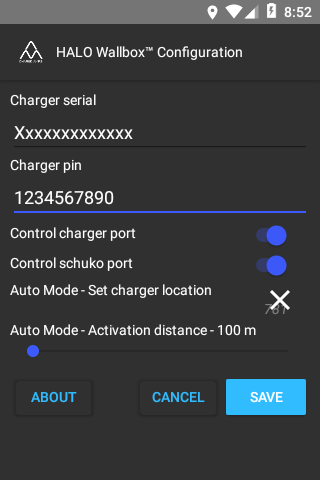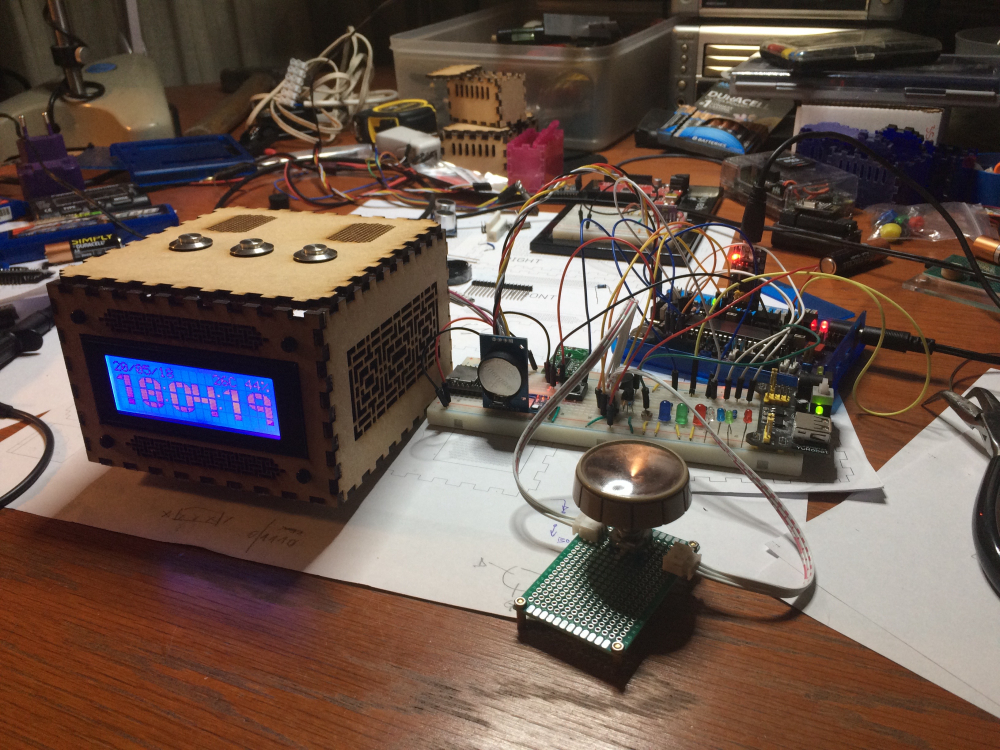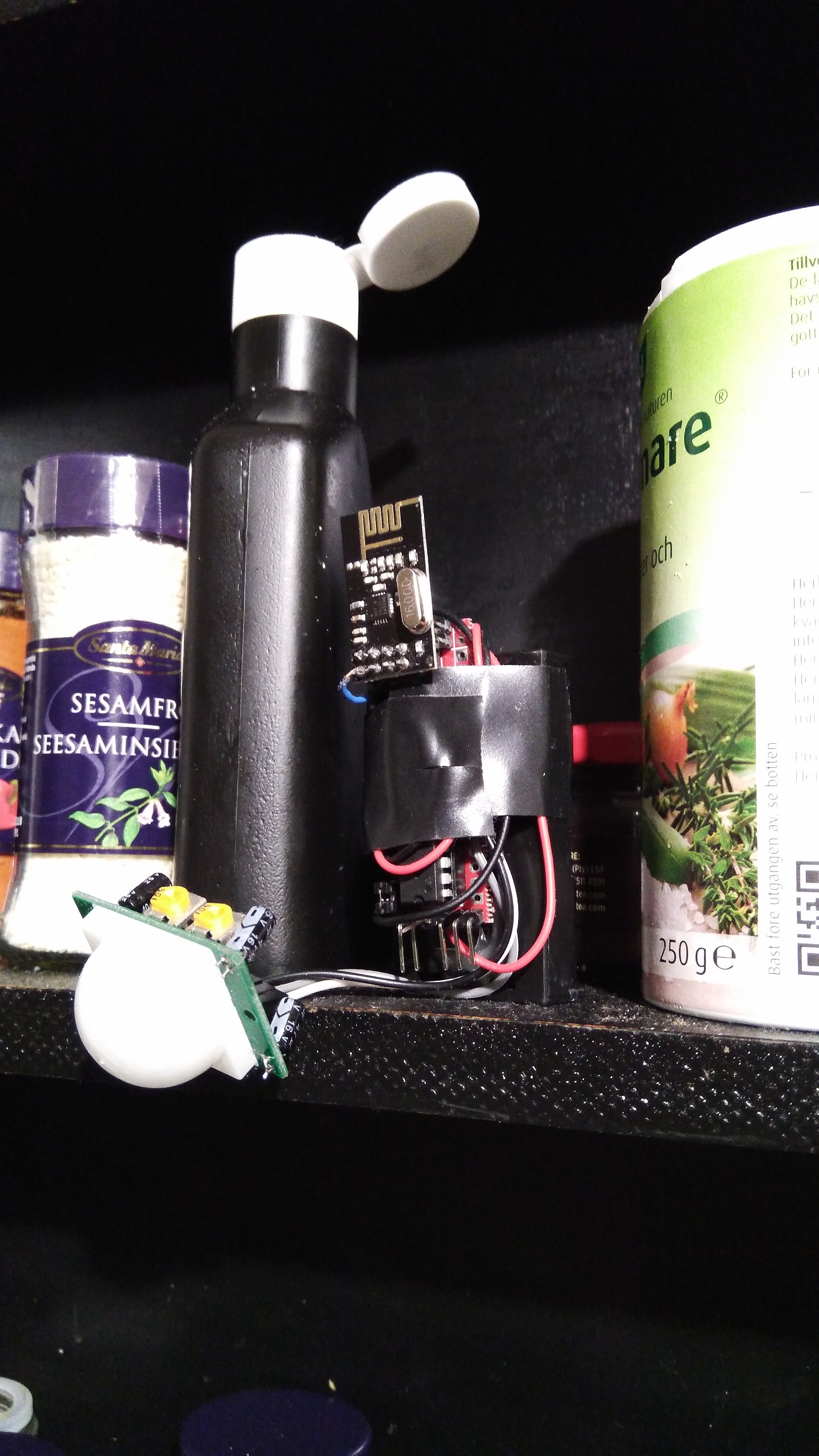What did you build today (Pictures) ?
-
@neverdie how are you getting on with setting the printer up? I have been struggling with the correct setting for some time with problems like the plastic would stick to the surface even though it is pre-heated. At the end I got really frustrated and retuned the printer. I am using www.3dhubs.com now if I need to print anything.
-
@neverdie how are you getting on with setting the printer up? I have been struggling with the correct setting for some time with problems like the plastic would stick to the surface even though it is pre-heated. At the end I got really frustrated and retuned the printer. I am using www.3dhubs.com now if I need to print anything.
@alexsh1 said in What did you build today (Pictures) ?:
@neverdie how are you getting on with setting the printer up? I have been struggling with the correct setting for some time with problems like the plastic would stick to the surface even though it is pre-heated. At the end I got really frustrated and retuned the printer. I am using www.3dhubs.com now if I need to print anything.
It's working like a dream with both PLA and PETG, which are the only plastics I've tried thus far. I'm using the Prusa I3 MK3 (Prusa's 4th generation 3D printer). Following dbemowsk's suggestion, I'm now using Octoprint, running on a Raspi3b, which is mostly useful for uploading print files and monitoring from a distance using a webcam. Honestly, though, once it gets past the first layer, I haven't had any failures, so the webcam probably isn't needed at all.
-
@alexsh1 What brand/model of printer were you using? Also, what type of plastic were you trying to print with?
-
@dbemowsk I was using PLA. The printer was the most popular model on Amazon.
That's the one: -
@alexsh1 You can buy PEI print beds as an add on for most printers. Maybe that might have helped your issue. When printing PLA, I print a 5mm brim on the first layer, and that keeps the print object from prematurely dislodging later. Haven't needed a brim though when printing PETG, which just naturally bonds very strongly to the PEI print bed.
If there are going to be failures, they'll probably happen in the first layer. Once you get beyond that, it's smooth sailing.
-
@alexsh1 You can buy PEI print beds as an add on for most printers. Maybe that might have helped your issue. When printing PLA, I print a 5mm brim on the first layer, and that keeps the print object from prematurely dislodging later. Haven't needed a brim though when printing PETG, which just naturally bonds very strongly to the PEI print bed.
If there are going to be failures, they'll probably happen in the first layer. Once you get beyond that, it's smooth sailing.
@neverdie said in What did you build today (Pictures) ?:
If there are going to be failures, they'll probably happen in the first layer. Once you get beyond that, it's smooth sailing.
That's exactly what happened. The first layer simply would not stick to the surface. Especially, if it is, say, a larger project box. For small items - no problem.
I must admit I did not spend too much time on this. I tried it for a week and then just returned it. Too much trouble for occasional prints I do.
-
@dbemowsk It is a good printer I suppose. I only used PLA and just did not spent too much time trying to find the right settings. Given that a few prints I ordered were also warped at the first run, I concluded that this is still at the DIY stage.
I'll probably get a printer when technology is going to be more advanced. -
@dbemowsk It is a good printer I suppose. I only used PLA and just did not spent too much time trying to find the right settings. Given that a few prints I ordered were also warped at the first run, I concluded that this is still at the DIY stage.
I'll probably get a printer when technology is going to be more advanced. -
A temp-node on 2xAA. Also a sneak-peak on EasyPCB rev 10...
-
A temp-node on 2xAA. Also a sneak-peak on EasyPCB rev 10...
@sundberg84 Which microscope are you using, looking 8:07 into your video?
-
@sundberg84 Which microscope are you using, looking 8:07 into your video?
@bjacobse it's the cheapest one on eBay with the software cheese on Linux. I think it's a replica on Andostar x500 so search Usb microscope Andostar and you will find.
-
@bjacobse it's the cheapest one on eBay with the software cheese on Linux. I think it's a replica on Andostar x500 so search Usb microscope Andostar and you will find.
-
I've been busy this week building my first native android app in (nativescript-vue). It will control my new car charging station (HALO Wallbox). The charging port will automatically turn on when I'm closing in to our house and turn off off when leaving the area.



-
I've been busy this week building my first native android app in (nativescript-vue). It will control my new car charging station (HALO Wallbox). The charging port will automatically turn on when I'm closing in to our house and turn off off when leaving the area.



-
One of three ongoing projects:


lasercut box
atmega1284p based
DS3231 rtc (very accurate and 2 alarms!)
LDR
20 by 4 LCD, two sizes of numbers, menu driven setup
buzzer
leds for moodlighting
doppler for proximity detection
encoder for scrolling through values (for setting time)
buttons with LED feedback for interactivity
mp3 player
most interface objects MySensorised :-)This entry is to boost my energy, because we are still a long way from home (pcb is still not made, focus is now on prototype and software).
-
I love the design of the air vent on the righthand side of your laesrcut box. Does that pattern have a name?
-
I love the design of the air vent on the righthand side of your laesrcut box. Does that pattern have a name?
@neverdie nope, but it is inspired by oriental frames, I just made that based on what I saw on one of my cabinets (which I bought while living in Singapore).
-
I love the design of the air vent on the righthand side of your laesrcut box. Does that pattern have a name?
@neverdie I will publish the project once it has advanced a bit more (still need to design the PCB for this box).


